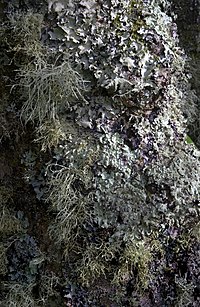
Photo from wikipedia
In this work, a total of 72 commercial table olive packages obtained from different international markets were analysed to determine their fungal biodiversity. Viable fungal counts ranged from the detection… Click to show full abstract
In this work, a total of 72 commercial table olive packages obtained from different international markets were analysed to determine their fungal biodiversity. Viable fungal counts ranged from the detection threshold (<1.6 log10 CFU/g in 25% of cases) to a maximum of 5.86 log10 CFU/g. Assignation of fungal taxonomy was carried out through a metataxonomic analysis of the ITS region, which revealed that almost half of the total sequences obtained from all packages corresponded to the Pichia genus (44.08%), followed by Citeromyces (14.45%), Candida (8.07%), and Wickerhamomyces (6.95%). In lower proportions were also detected other genera such as Starmerella (3.60%), Saccharomyces (2.24%), Debaryomyces (2.08%), and Dekkera (2.05%). The statistical analysis allowed to link certain taxa to specific types of elaboration (lye treated, green, and black natural olives), presentation (pitted, whole, or sliced samples), and packaging material/system (glass, PET, plastic bags, and vacuum). Likewise, Zygotorulaspora genus was especially sensitive to the presence of potassium sorbate, while other genera such as Sporobolomyces, Moniliella, and Gibellulopsis were more abundant in packages treated with this preservative. Lastly, potential pathogenic fungal genera such as Alternaria, Kodamaea, Lodderomyces, Malasessia, or Aspergillus were detected in low proportions (<0.3%), although with higher representation in some individual samples. Our results contribute to improving our knowledge of the fungal population associated with this ready-to-eat fermented vegetable, providing us a strong tool to assess the safety, stability, and quality of the final product.
Journal Title: Food microbiology
Year Published: 2022
Link to full text (if available)
Share on Social Media: Sign Up to like & get
recommendations!